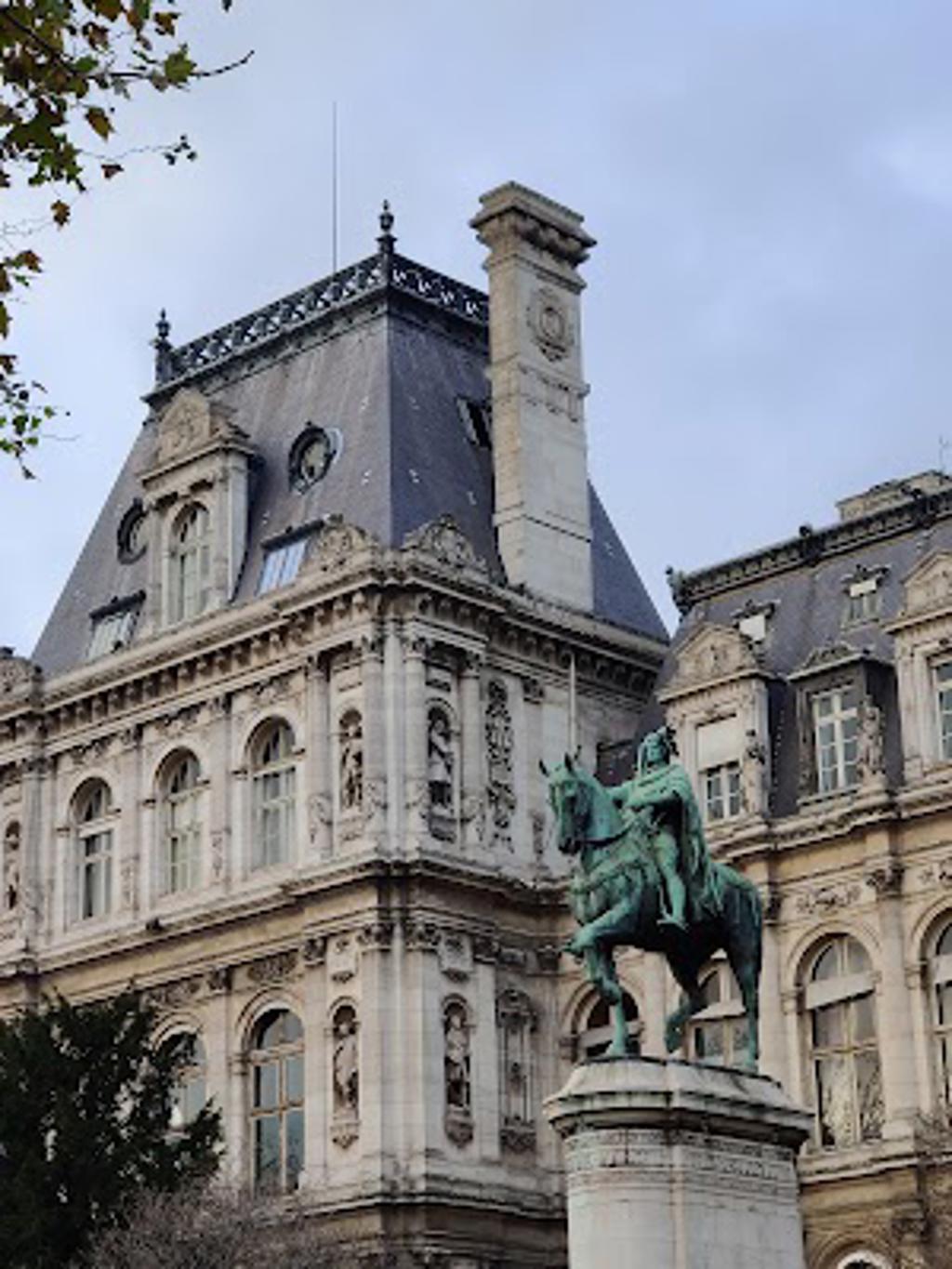About Étienne Marcel, prévôt des marchands
The statue of Étienne Marcel, standing prominently on the Quai de l'Hôtel de Ville, captures the essence of a pivotal figure in Parisian history. Marcel, depicted in a commanding pose, holds a baton of authority, symbolizing his role as the provost of the merchants in the 14th century. His attire, a blend of civic and noble elements, reflects his dual role as a leader of the people and a representative of the city's bourgeoisie. The statue, crafted with meticulous attention to detail, stands as a testament to his influence during a turbulent period in France's history.
Étienne Marcel's legacy is deeply intertwined with the history of Paris, particularly during the Hundred Years' War. As provost, he was a key figure in the 1358 revolt against the Dauphin Charles, advocating for the rights of the city's merchants and citizens. His efforts to reform the governance of Paris and his push for greater autonomy from the crown marked him as a champion of the people. The statue, erected in the 19th century, serves as a reminder of his bold attempts to balance power between the monarchy and the burgeoning middle class.
Life's Journey: Étienne Marcel
Born around 1302, Étienne Marcel rose to prominence as a wealthy merchant and eventually became the provost of the merchants of Paris. His leadership during the economic and political crises of the mid-14th century was marked by his efforts to protect the interests of the city's merchants against the backdrop of the Hundred Years' War. Marcel's most notable act was his involvement in the 1358 uprising, where he sought to impose reforms on the Dauphin Charles, demanding accountability and representation for the citizens of Paris. His assassination later that year marked the end of his revolutionary efforts, but his legacy as a reformer endures.
Plan your perfect trip to Paris with Travo! Download now and start exploring.
Living Legacy in Paris
Today, the statue of Étienne Marcel stands as a symbol of civic pride and the enduring spirit of reform in Paris. It serves as a focal point for discussions about governance, representation, and the balance of power between the state and its citizens. The monument is not just a tribute to Marcel's historical role but also a reminder of the ongoing struggle for social justice and political reform. Visitors and locals alike gather around the statue, reflecting on the impact of Marcel's actions and the relevance of his ideals in contemporary society.
Hidden Stories in the Details
The statue's intricate details reveal much about Marcel's character and the era he lived in. The baton he holds is not merely a symbol of authority but also a representation of his leadership and vision for a more equitable society. His attire, with its rich textures and layers, speaks to his status as both a merchant and a civic leader. The base of the statue, adorned with reliefs depicting scenes from Marcel's life, offers a visual narrative of his contributions to Paris, from his economic reforms to his political activism.
Artistic Elements and Symbolism
The statue of Étienne Marcel is a masterful blend of realism and symbolism. The artist's choice to depict Marcel in a thoughtful yet assertive pose captures the essence of his leadership style—firm yet considerate. The use of bronze, a material associated with durability and strength, underscores the lasting impact of Marcel's legacy. The statue's placement near the Hôtel de Ville, a center of Parisian governance, further emphasizes Marcel's role in shaping the political landscape of the city. Through its artistic elements, the monument invites viewers to engage with the history and ideals of a man who sought to redefine the relationship between the people and their rulers.






Map loading...
Location
Quai de l'Hôtel de Ville, 75004, Paris
